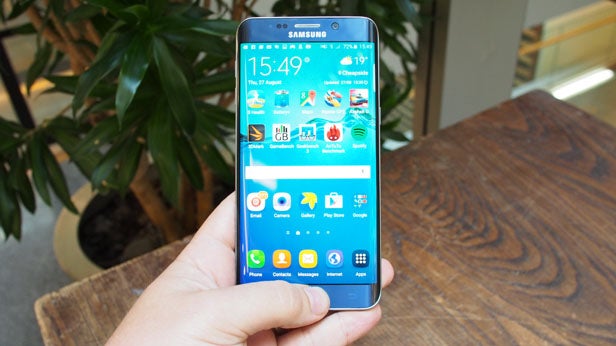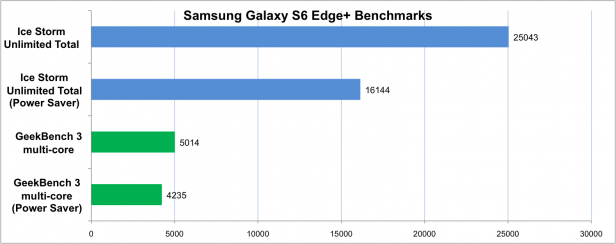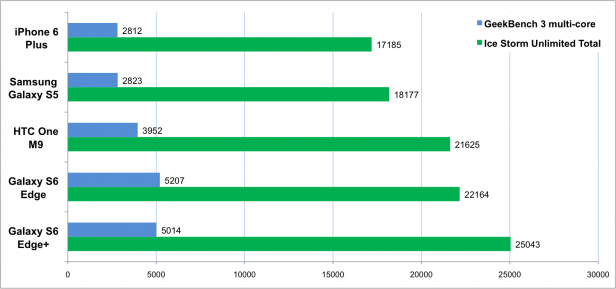Samsung Galaxy S6 Edge+ Review - Performance Specs Review
Performance Specs
It's bigger, but not better

Sections
- Page 1 Samsung Galaxy S6 Edge+ Review
- Page 2 Performance Specs Review
- Page 3 Software, Apps Review
- Page 4 Features, Connectivity, Storage Review
- Page 5 Camera Review
- Page 6 Battery life and verdict Review
Galaxy S6 Edge+ – Performance
Quad-core 1.5GHz with Quad-core 2.1GHz Exynos 7420 processor, 4GB RAM, Mali-T760MP8 GPU
It’s no surprise that Samsung has chosen to go with it’s own 64-bit Exynos processor rather than the more commonly used Quaclomm chips seen in competing phablets.
Qualcomm’s Snapdragon 810 has been used in a few flagships – most notably the HTC One M9 – and hasn’t exactly covered itself in glory. Purported issues with overheating (some of which we’ve experienced first hand) mean Samsung probably made the right choice opting against it.
Just like the Snapdragon 810 the Exynos 7420 in the Edge+ uses ARM’s big.LITTLE architecture.
This allows a ‘big’ quad-core CPU (2.1GHz) to be paired with a ‘little’, low-power quad-core (1.5GHz). Smaller tasks like browsing the web and listening to music use the little quad, which drains less juice. Intensive tasks, like 3D gaming, use the big quad.
The S6 Edge+ has the same processor that the S6 and S6 Edge pack but adds an extra gigabyte of DDR4 RAM – bringing it up to 4GB and matching the Note 5.
It’s a beast of a phone in every respect.
In our benchmark tests the Edge+ blitzes the competition. It scores an enormous 25,043 in our gaming test using Ice Storm Unlimited on 3DMark – that’s 7,000 more than the iPhone 6 Plus and almost 3,000 more than the smaller S6 Edge. 
That 13% improvement is a little surprising and could be due to a combination of tweaks Samsung has made to the Exynos chipset and the software, as well as the extra RAM.
Conversely the S6 Edge+ performs a little worse than its sibling when using the Geekbench 3 benchmark – this one tests pure processing muscle. A multi-core score of 5,014 is almost 4% slower.
Once again it’s possible to attribute this to tweaks. We did ask Samsung, but it wasn’t forthcoming with details. 
In the real world all this power means that the Edge+ is butter smooth. Apps open instantly and GPU intense 3D games look fantastic. The splashes and waves in Riptide GP2 look as good as any water effects you’ll see on a small screen and Asphalt Overdrive is packed with shiny polygons. We hardly noticed a dropped frame during hours of play.
Very occasionally we did find the S6 Edge+ to be unresponsive. Taps would go unheeded or the screen wouldn’t light up for a few seconds when waking it up. It’s not something that happened often – maybe once a day for a few seconds – but it’s still annoying.
If you like playing games on your phone then the S6 Edge+ is a great option. Those are the most processor intensive apps you can download, and if you’re not that interested in games you probably won’t even notice how powerful Samsung’s handset truly is.
How we test phones
We test every mobile phone we review thoroughly. We use industry standard tests to compare features properly and we use the phone as our main device over the review period. We’ll always tell you what we find and we never, ever, accept money to review a product.


